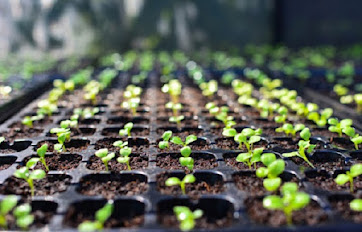Seed plays an important role in the crop production. It is a very crucial key for agricultural progress and important component in the agriculture industry. Seed quality also plays a vital role in the production of agricultural & horticultural crops. Seed is defined as a matured & ripened ovule, which is formed after the fertilization and with the tissues of mother plant. Seed formation is the process of propagation in crop plants. They include reserve food materials including proteins, starch, and other components, which are required for proper embryonic development & growth of the plants. Any part of the plant that can be used for propagation purposes is called seeds. All vegetative materials such as rhizomes, tubers, bulbs, corms, runner, sucker, stolon, setts and cuttings are considered as seed. With favorable environmental conditions such as temperature, light and sufficient soil moisture, the seed grows into a healthy, independent plant that produces flowers and seeds throughout its life cycle.
Based on the number of cotyledons
present in the Seed, seeds are divided into monocot seeds and dicot seeds.
Monocot seeds are single seeds that are generally embedded in a fruit called a
caryopsis and utricle. Dicot seeds are usually made up of a primary embryonic
axis and an accumulating tissue called a cotyledon which combines and forms the
seed embryo. Growing awareness among farmers related to the benefits of using
certified seeds has resulted in increased demand for seeds in recent years.
This has led to growing willingness of farmers to pay a high price for quality
seeds.
In terms of seed type, Seed
market can be segregated as conventional seed and genetically modified
(GM) seed. In terms of crop type, market can be segregated as fruits &
vegetable crops and field crops. Fruits & vegetable crops include chilli,
melon, tomato, okra, gourds, cucumber, cauliflower, cabbage, and others
(pumpkin, eggplant, radish, and carrot). Additionally, field crops include
rice, wheat, cotton, corn, millet, sorghum and sunflower. In addition, in terms
of availability, market can be segregated as saved seeds and commercial seeds.
Growth in requirement to increase food production, followed by rise in usage of waste land for agricultural purposes, modernization of agriculture, rise in usage of biofuels & animal feed and diversification of diets are some major factors, which are responsible for growth of the Seed market. However, prolonged time & extensive research involved in the development of new seed varieties and lower acceptance of genetically modified crops may impact the market. Moreover, enhancement in seed replacement rate (SRR), Introduction of new technologies having potential benefits over conventional ones and rise in demand for seeds in emerging economies are leading opportunities for market.
By geographic term, the
Asia-Pacific region dominates the global Seed
market caused by rise in disposable income, growth in population and
development in agriculture sector across the region. The Europe and
North-America regions are likely to exhibit considerable growth rate as a
result of rise in demand of agriculture products and rapid technological
innovations in the production of seeds over the forecast period. It is
estimated that global
Seed market will be reached at rapid pace because of sophistication of
seed technologies such as seed coating & seed pelleting during the forecast
period.
For More Information, Click on the Link Below:-
Market
Research Reports for Seed
Contact Us:-
Ken Research
Ankur Gupta, Head Marketing &
Communications






